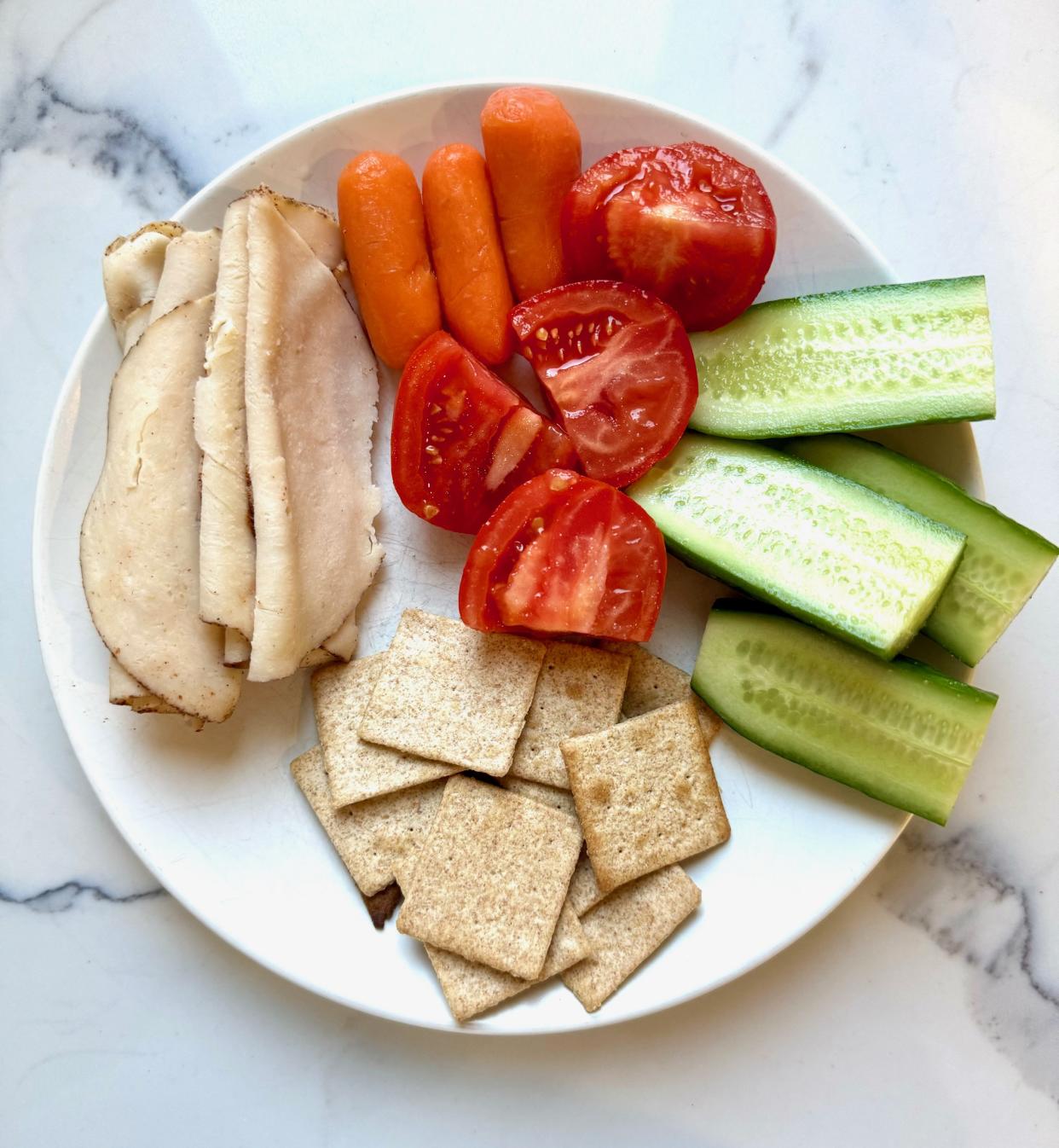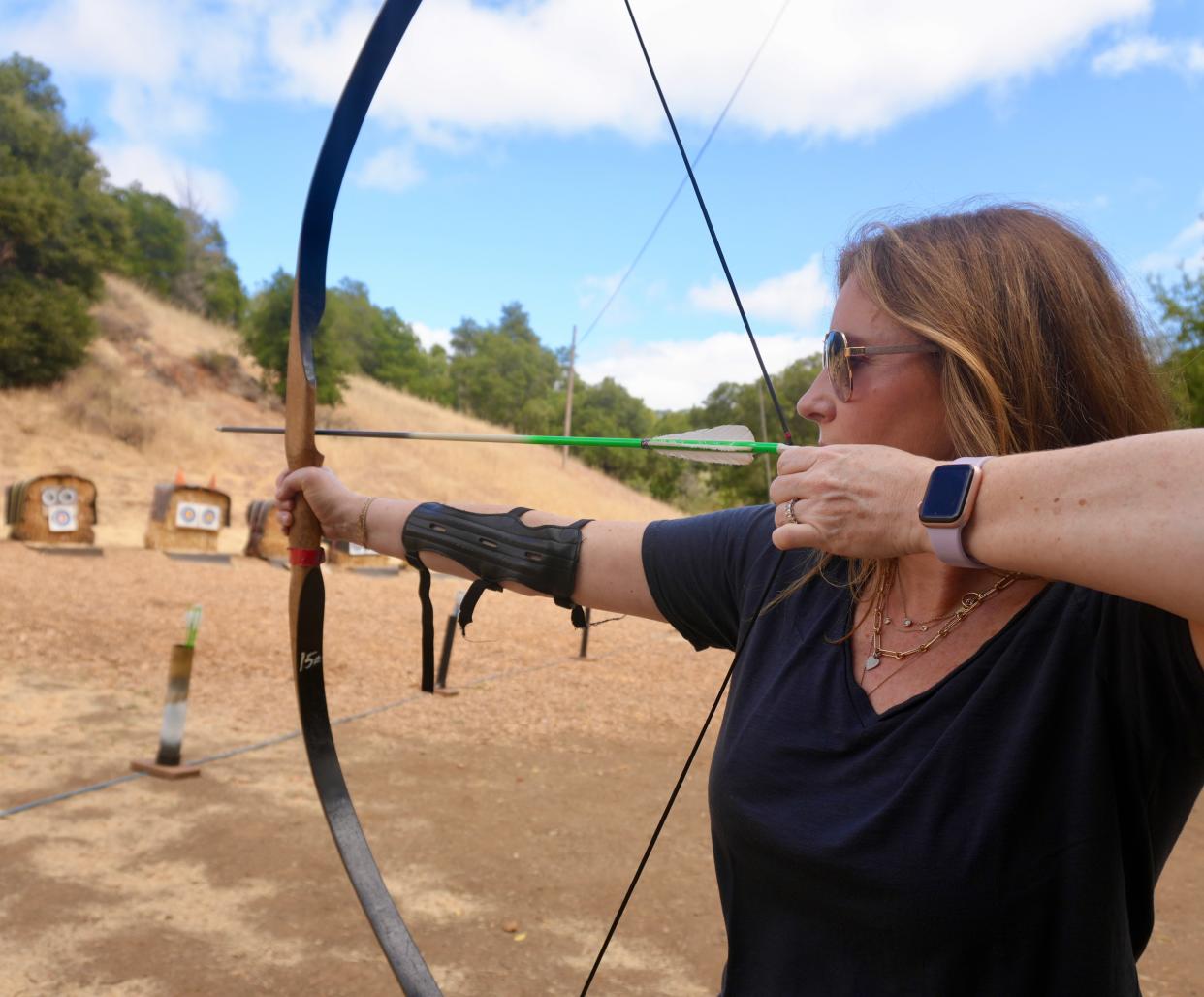Wear bright colors on Monday, pet dogs and try tips from happiness expert Arthur Brooks: A health editor's guide to finding joy this week

Your friendly health editor Rachel here to talk about all things happiness. (And it’s not just because I recently had the joy of speaking with 75-year-old “Jessie’s Girl” singer Rick Springfield about all things health and wellness.)
Most people want to be happy, of course, but a lot of what we were taught about it is flawed, if not downright wrong — either framing happiness as a destination or something we should chase or thinking that if you’re a happy person that means you don’t ever feel sad or have cranky, crummy days too. I had an enlightening conversation about the sought-after emotion with Arthur Brooks, happiness expert, Harvard professor and co-author with Oprah Winfrey of the book Build the Life You Want. Here’s what I learned from him about happiness and how you can bring more joy into your life.
What do people often get wrong about happiness?
The main reason that people all want to be happier but often don’t get happier is because they’re misunderstanding what it is and what it’s supposed to be. Happiness is a measurable phenomenon that we find that we can get better at and more skilled at. It’s not the goal, it’s not the destination — it’s the direction. You can’t be happy. You can be happier. And you’re not supposed to be happy all the time. Plus you’d never learn and grow, which you get from negative experiences.
Do you need to experience unhappiness to appreciate happiness?
For sure. And the good news is that you’re not going to have one without the other. Every life is full of both. What we should want is to be fully alive, and to be fully alive is to have the full range of experiences and emotions that we actually have and know how to manage them.
What are some small things people can do to be a little bit happier?
I’m looking at people’s habits all the time. I’m recommending that people stop drinking alcohol all the time because having a good day today starts last night ... [which] means you better not wake up hungover. Other people are spoiling their happiness by doing things like chronically looking at their devices and spending too much time on social media, which is why I’m involved in this LG campaign [LG’s Optimism Your Feed campaign, which is about making social media content more positive].
When it comes to social media, for example, which is a hugely deleterious force in the lives of a lot of young adults and adolescents today, the reason is — No. 1 — overuse and the second is the [negative] content. Instead of saying, ‘Hey, turn off the device’ — well, good luck. It’s not going to work. A much better idea is to start injecting positive content that’s less addictive and leads to more happiness.
[Lastly,] if you’re feeling bad, if you go help somebody else then you feel better. When you’re feeling bad, if you just take care of yourself you don’t feel better. The key thing is every time you’re feeling bummed out or afraid or angry or annoyed or resentful, go help somebody, go love somebody, go take care of somebody and you’ll see — it’ll rock your world.
This interview has been edited for length and clarity.
What I’m doing ... wearing bright colors on Mondays
Mondays can be tough. Previous surveys show that nearly 60% of people say it’s their least favorite day of the week. My trick to perk myself up on a sluggish Monday? I purposely wear vibrant colors since they make me feel more alert and, well, happy. While it’s well known that the colors you wear and surround yourself with can have a direct impact on your mood, I recently learned that there’s actually a name for my attire trick: It’s called “dopamine dressing” — basically, “dressing in a way that brings you joy and boosts your mood.”

What I’m making ... ‘girl lunches’
Figuring out what to eat for lunch (don’t get me started on dinner) is a constant struggle. That is until I started adopting “girl lunches.” It’s inspired by “girl dinner” — a TikTok trend so popular that the term was actually added to the dictionary earlier this year — which basically means nibbling on a variety of foods, like a personal charcuterie plate, rather than the traditional entrée and side dish. My go-to girl lunch: sliced turkey or chicken, Persian cucumbers (you can eat them with the skin on for fiber), Early Girl tomatoes (high in vitamins C and A), baby carrots and reduced-fat Wheat Thins. Since doing the midday meal version of this, I actually look forward to lunch and eat more vegetables to boot.

What I’m trying ... picking up a new hobby
I recently came across a TikTok video by Matt Cowley and while it’s geared toward Gen X, it can apply to anyone: “Find something you want to do and do it. ... Don’t be afraid. Start now.” I’ve been interested in archery since trying it a few months ago on a family vacation. After watching the video, I thought, “What am I waiting for?” I immediately signed up for a lesson — and loved it. Archery is both badass and zen, which is a winning combo in my book. Plus, having a hobby is good for you: Research shows that people who have hobbies are reportedly healthier, happier and have greater life satisfaction than those who don’t. So what are you waiting for?
What I learned ... how to make good moments last longer
When we buy a new shirt or a new phone, it’s exciting. But those feelings of happiness don’t typically last. Eventually we return to our baseline level of happiness, i.e., how we felt before we bought the shiny new thing. It’s called the “hedonic treadmill” and it’s the reason why the urge to buy new things can be hard to resist. The Hidden Brain podcast recently addressed this in an episode called “Making the World Sparkle Again” — and with a title like that it was an instant click.
On the show, neuroscientist Tali Sharot talked about how the brain has limited amounts of resources and once we process something, our brain wants to save those resources and stops responding, aka habituation. It’s the reason why if you walk into a room with fresh roses, you’ll smell them at first but eventually you acclimate. But Sharot says by breaking up good experiences, you can get more pleasure out of them. So, for example, rather than eating the entire slice of cake for dessert at a restaurant, eat half of it and then eat the second half at home, doubling your pleasure.
The same doesn’t hold true for tasks you’re dreading, however. If you have a chore you’re not looking forward to, such as cleaning your bathroom or doing your taxes, Sharot says it’s actually better to get it over with since divvying it up only prolongs the un-fun task.

What I’m loving ... playing with a puppy
After my sweet dog passed away last year at 18 years old, I finally felt ready to get another puppy this summer. Meet Cashew, a Yorkie-poo who is all shark teeth and adorableness. While there are plenty of frustrating days when he misses the wee pad or gnaws the paint off our furniture, there are so many benefits to having a dog, beyond that unconditional love. Pets in general reduce stress, lower the risk of developing high blood pressure and encourage you to get more exercise (I’ve been taking mini breaks to kick around a soccer ball in my backyard and have Cashew run after it). But you don’t even need to own a dog to reap some of these benefits. Just watching them, or better yet petting someone else’s dog (after asking first!), can also give you an instant mood boost.
What I’m watching ... birds as a mood booster
You reach a certain age in life and all of a sudden, you’re interested in birds. As one person put it: “As you age, it’s ridiculous how fast bird-watching creeps up on you. You spend your whole life being 100% indifferent to birds, and then one day you’re like, ‘Damn is that a yellow-rumped warbler?’” That might be because not only is bird-watching free, but it also comes with some mood-boosting benefits (unless they’re blue jays, which are “notoriously aggressive” and used to dive-bomb my poor cat when I was a kid). A 2022 study published in Scientific Reports found that hearing or seeing birds improved mental well-being for up to eight hours. And you can download apps to decipher and discover which birds are right in your neighborhood.


